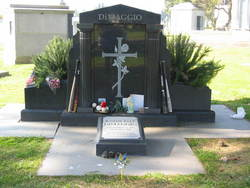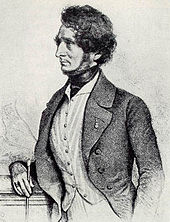On this day in 1869, composer Hector Berlioz died at his Paris home, No.4 rue de Calais, at 30 minutes past midday, surrounded by friends at the age of 65. Born Louis-Hector Berlioz on 11 December 1803 at No. 83 rue nationale, the family home in the French commune of La Côte-Saint-André in the département of Isère, near Grenoble. Perhaps best known for his compositions Symphonie fantastique, Grande messe des morts (Requiem), Les Troyens, and La damnation de Faust. Berlioz made significant contributions to the modern orchestra with his Treatise on Instrumentation. He also composed around 50 compositions for voice, accompanied by piano or orchestra. His influence was important for the further development of Romanticism.
Despite his parents’ disapproval, in 1824 he formally abandoned his medical studies to pursue a career in music. He composed the Messe solennelle. This work was rehearsed and revised after the rehearsal but not performed until the following year. Later that year or in 1825, he began to compose the opera Les francs-juges, which was completed the following year but went unperformed. The work survives only in fragments, but the overture has been much recorded and is sometimes played in concert.
On 11 September 1827, he attended a production by a traveling English theatre company at the Odéon theatre with the Irish-born actress Harriet Smithson playing Ophelia and Juliet in the Shakespeare plays Hamlet and Romeo and Juliet. He immediately became infatuated with both actress and playwright. Prone to his impulses, Berlioz began flooding Smithson’s hotel room with love letters which both confused and terrified her. His advances led nowhere.
He began and finished composition of the Symphonie fantastique in 1830, a work which would bring Berlioz much fame and notoriety. He entered into a relationship with – and subsequently became engaged to – Marie Moke, despite the symphony being inspired by Berlioz’s obsession with Harriet Smithson.
During his stay in Italy, he received a letter from the mother of his fiancée, Camille Moke, informing him that she had called off their engagement. Instead her daughter was to marry Camille Pleyel (son of Ignaz Pleyel), a rich piano manufacturer. Enraged, Berlioz decided to return to Paris and take revenge on Pleyel, his fiancée, and her mother by killing all three of them. He created an elaborate plan, going so far as to purchase a dress, wig and hat with a veil (with which he was to disguise himself as a woman in order to gain entry to their home). He even stole a pair of double-barrelled pistols from the Academy to kill them with, saving a single shot for himself. Planning out his action with great care, Berlioz purchased phials of strychnine and laudanum to use as poisons in the event of a pistol jamming.
Despite this careful planning, Berlioz failed to carry the plot through. By the time he had reached Genoa, he “left his disguise in the side pocket of the carriage”. After arriving in Nice (at that time, part of Italy), he reconsidered the entire plan, deciding it to be inappropriate and foolish.
On Berlioz’s return to Paris, he and Harriet were finally introduced and entered into a relationship. Despite Berlioz not understanding spoken English and Harriet not knowing any French, on 3 October 1833, they got married in a civil ceremony at the British Embassy with Liszt as one of the witnesses. The following year their only child, Louis Berlioz, was born – a source of initial disappointment, anxiety and eventual pride to his father. Unfortunately for Berlioz, he was soon to discover that living under the same roof as his beloved wife was far less appealing than worship from afar. Their marriage turned out a disaster as both were prone to violent personality clashes and outbursts of temper.
Harriet died in 1854. In October, Berlioz married Marie Recio. In a letter written to his son, he said that having lived with her for so long, it was his duty to do so.
Marie died unexpectedly of a stroke at the age of 48, on 13 June 1862. Berlioz soon met a young woman named Amélie at Montmartre Cemetery, and though she was only 24, they developed a close relationship despite a 35-year age difference. Amélie requested that they end their relationship, which Berlioz did, to his despair.
Berlioz met Estelle Fornier – the object of his childhood affections – in Lyon for the first time in 40 years, and began a regular correspondence with her. Berlioz soon realized that he still longed for her, and eventually she had to inform him that as a married woman there was no possibility that they could become closer than friends.
Berlioz had a keen affection for literature, and many of his best compositions are inspired by literary works. For Symphonie fantastique, Berlioz was inspired in part by Thomas De Quincey’s Confessions of an English Opium-Eater. For La damnation de Faust, Berlioz drew on Goethe’s Faust; for Harold en Italie, he drew on Byron’s Childe Harold; for Benvenuto Cellini, he drew on Cellini’s own autobiography. For Roméo et Juliette, Berlioz turned, of course, to Shakespeare’s Romeo and Juliet. For his magnum opus, the monumental opera Les Troyens, Berlioz turned to Virgil’s epic poem The Aeneid. In his last opera, the comic opera Béatrice et Bénédict, Berlioz prepared a libretto based loosely on Shakespeare’s Much Ado About Nothing. His composition “Tristia” (for orchestra and chorus) drew its inspiration from Shakespeare’s Hamlet.
The Final Footprint
His funeral was held at the recently completed Église de la Trinité on 11 March, and he was buried in Montmartre Cemetery with his two wives, who were exhumed and re-buried next to him. Other notable final footprints at Montmartre include; Dalida, Edgar Degas, Léo Delibes, Alexandre Dumas, fils, Marie Duplessis, Theophile Gautier, Gustave Moreau, Henri Murger, Jacques Offenbach, Francis Picabia, Stendhal, François Truffaut, and Horace Vernet.
- Bidding farewell to a nationalist Russian composer: “One thousand greetings to Balakirev.”
- Speaking to his dead wife, “Oh, Mère Recio, it is finished.”
- After quoting from Macbeth’s final soliloquy in Shakespeare’s play of the same name: “‘Life’s but a walking shadow, a poor player, that struts and frets his hour upon the stage, and then is heard no more. It is a tale told by an idiot, full of sound and fury, signifying nothing.’ That is my signal.”
For the opening of Stanley Kubrick‘s film adaptation of The Shining (1980) by Stephen King, composer Wendy Carlos re-interpreted the “Dies Irae” section of Berlioz’s Symphonie Fantastique using a Moog Synthesizer.
 On this day in 1999, baseball Hall of Fame
On this day in 1999, baseball Hall of Fame player, 3-time MVP, 13-time All Star, 9-time World Series champion, “Joltin’ Joe”, “The Yankee Clipper”, Joe DiMaggio, died at his home in Hollywood, Florida at the age of 84 from lung cancer. Born Giuseppe Paolo DiMaggio on 25 November 1914 in Martinez, California. Perhaps best known for his 56-game hitting streak (15 May – 16 July 1941), a record that still stands. I believe he is the only player to be named an all-star in every season he played. The Yankees retired his number 5 in 1952.
player, 3-time MVP, 13-time All Star, 9-time World Series champion, “Joltin’ Joe”, “The Yankee Clipper”, Joe DiMaggio, died at his home in Hollywood, Florida at the age of 84 from lung cancer. Born Giuseppe Paolo DiMaggio on 25 November 1914 in Martinez, California. Perhaps best known for his 56-game hitting streak (15 May – 16 July 1941), a record that still stands. I believe he is the only player to be named an all-star in every season he played. The Yankees retired his number 5 in 1952.
DiMaggio was married twice; Dorothy Arnold (1939 – 1944) and Marilyn Monroe (1954 – 1954). They eloped at San Francisco City Hall on January 14, 1954. The relationship was reportedly tumultuous and Monroe filed for divorce on grounds of mental cruelty nine months after the wedding. After the failure of their marriage, DiMaggio underwent therapy, stopped drinking alcohol, and expanded his interests beyond baseball; he and Monroe read poetry together in their later years.
Monroe went on to marry Arthur Miller. Reportedly, as that marriage was ending, Monroe and DiMaggio became friends and re-marriage rumours swirled. Apparently devastated at the news of her death, DiMaggio claimed her body and arranged her funeral, barring Hollywood’s elite. He had a half-dozen red roses delivered 3 times a week to her crypt for 20 years. A true gentleman, he refused to talk about her publicly or otherwise exploit their relationship. DiMaggio never remarried.
On 17 September 1992, the Joe DiMaggio Children’s Hospital at Memorial Regional Hospital in Hollywood, Florida, opened. DiMaggio’s popularity was such that he has been referenced in film, television, literature, art, and music both during his career and decades after he retired.
 The Final Footprint – DiMaggio is entombed in a private single crypt mausoleum in Holy Cross Catholic Cemetery in Colma, California. A raised granite cenotaph in front of the mausoleum was engraved with his name and birth and death dates and the term of endearment; GRACE, DIGNITY AND ELEGANCE PERSONIFIED. His final words may or may not have been, “I’ll finally get to see Marilyn.” Another notable final footprint at Holy Cross; Vince Guaraldi.
The Final Footprint – DiMaggio is entombed in a private single crypt mausoleum in Holy Cross Catholic Cemetery in Colma, California. A raised granite cenotaph in front of the mausoleum was engraved with his name and birth and death dates and the term of endearment; GRACE, DIGNITY AND ELEGANCE PERSONIFIED. His final words may or may not have been, “I’ll finally get to see Marilyn.” Another notable final footprint at Holy Cross; Vince Guaraldi.
Yankee Stadium’s fifth monument was dedicated to DiMaggio on 25 April 1999. Monument Park is an open-air museum containing a collection of monuments, plaques, and retired numbers honoring distinguished members of the Yankees. Other notable Yankees whose final footprints include memorialization in Monument Park; Babe Ruth, Lou Gehrig, George Steinbrenner, Roger Maris, Thurman Munson, Mickey Mantle, Roger Maris, Phil Rizzuto, Billy Martin, Mel Allen, Bob Sheppard, and Casey Stengel.
#RIP #OTD 2020 actor (The Seventh Seal, Through a Glass Darkly, The Greatest Story Ever Told, The Exorcist, Three Days of the Condor, Dune, Minority Report, Shutter Island, Robin Hood, Star Wars) Max von Sydow died at his home in Provence, France at age 90. Cremation
Have you planned yours yet?
Follow TFF on twitter @RIPTFF












